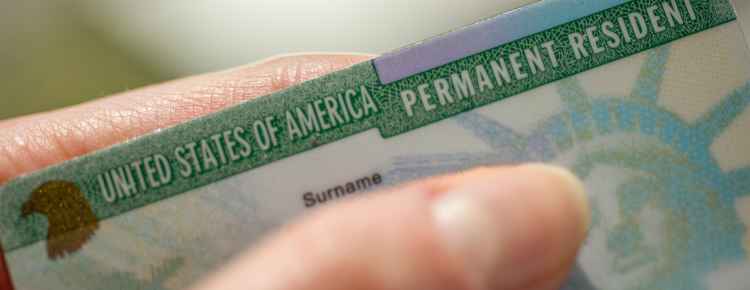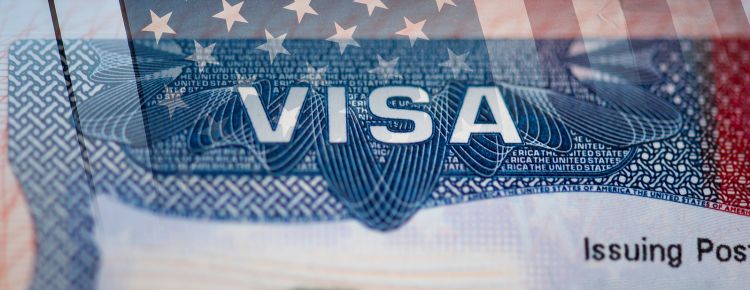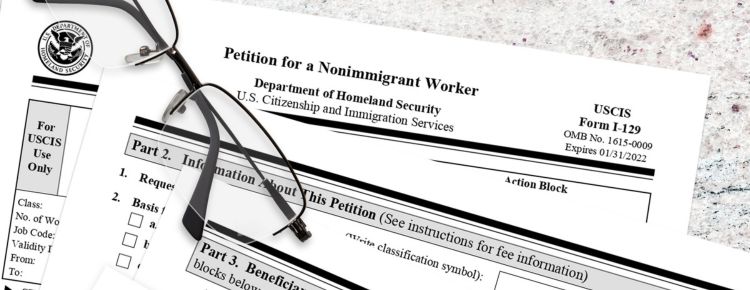How to Become a US Citizen: A Step-by-Step Guide

This comprehensive guide on how to become a US citizen will walk you through the entire process, from understanding the naturalization process to fulfilling key requirements and navigating the application process. Becoming a United States citizen is a life-changing event that opens up new opportunities and responsibilities. Whether you’re seeking a sense of belonging, better job prospects, or the right to vote and run for office, understanding the steps to citizenship is essential. Let’s explore the exciting journey towards becoming a proud US citizen.
Key Takeaways
- Understand the naturalization process and eligibility criteria for US citizenship.
- Follow key requirements, such as lawful permanent residency, age, continuous residence & good moral character.
- Be aware of the benefits & responsibilities associated with becoming a US citizen to ensure a successful transition.
Understanding the Naturalization Process

The naturalization process is the means by which immigrants acquire US citizenship after fulfilling the requisite criteria. Obtaining citizenship is a significant milestone, as it grants individuals access to rights and privileges not available to green card holders.
This section covers the basics of the naturalization process, the distinction between naturalization and citizenship, and the prerequisites for becoming a US citizen.
What is naturalization?
Naturalization is the process by which immigrants satisfy particular requirements to become United States citizens, including becoming a naturalized citizen. The initial requirement for attaining US citizenship is being a legitimate permanent resident of the United States, also known as having a green card. In some cases, individuals may automatically derive US citizenship from their parents if they are US citizens or green card holders.
Comprehending the naturalization process is pivotal, as it allows individuals to fully appreciate the rights and responsibilities associated with US citizenship.
What is citizenship?
Citizenship refers to the recognition of an individual as a member of a specific nation, with associated rights and responsibilities. In the context of the United States, some rights reserved for citizens include the right to vote, the right to own property, and the obligation to obey the law and pay taxes. Gaining citizenship is a major milestone, as it grants individuals access to rights and privileges not available to green card holders.
Eligibility criteria for naturalization
To be eligible for naturalization, an individual must meet certain naturalization requirements. These include:
- Being a lawful permanent resident (green card holder) for a minimum of five years
- Being at least 18 years of age
- Having continuous residence and physical presence in the United States
There are some exceptions to these requirements, such as those employed as a missionary, nun, brother, or sister, or members of the US Armed Forces.
Grasping these eligibility criteria is vital, as they establish an individual’s qualification for U.S. citizenship.
The Path to Citizenship: Key Requirements

Before starting the journey towards US citizenship, it’s important to acquaint oneself with the key prerequisites. These requirements include:
- Lawful permanent residency
- Age
- Continuous residence
- Good moral character
We’ll explore each of these requirements in detail in this section, highlighting their role in the successful culmination of the naturalization process.
Lawful permanent residency
Lawful permanent residency, or having a green card, is a crucial requirement for becoming a US citizen. Green card holders are authorized to reside permanently in the United States and enjoy certain rights and privileges. Before applying for citizenship, individuals must have held a green card for a specified period, usually five years, or three years if the green card was obtained through marriage to a US citizen. Fulfilling this prerequisite, also known as achieving permanent resident status, is a significant milestone on the roadmap to citizenship.
Age requirement
The minimum age for applying for US citizenship is generally 18 years old. This age requirement ensures that individuals seeking citizenship are mature and capable of understanding the responsibilities that come with being a US citizen. Fulfilling the age requirement is a fundamental aspect of the citizenship application process.
Continuous residence and physical presence
In addition to being a lawful permanent resident and meeting the age requirement, applicants must also fulfill the continuous residence and physical presence requirements for naturalization. This entails residing in the United States for at least five years after becoming a green card holder or three years if the green card was obtained through marriage to a US citizen. Additionally, applicants cannot be absent from the US for more than half of the required residency period. Fulfilling these criteria is key to demonstrating a commitment to life in the United States as a citizen.
Good moral character
Before applying for citizenship, individuals must demonstrate good moral character for a specific period, usually five years. Good moral character is an essential requirement for naturalization, as it reflects an individual’s commitment to the values and principles of the United States. Demonstrating good moral character involves having no criminal convictions or other violations of the law that would disqualify an applicant from becoming a US citizen.
Navigating the Application Process

Applying for US citizenship can be a complex and time-consuming process. To aid your successful journey, we offer a step-by-step guide to help you apply for citizenship, including filing Form N-400, attending a biometrics appointment, and taking the citizenship interview and test. By following these steps, you will be well-prepared to complete the naturalization process and become a proud US citizen.
Filing Form N-400
The first step in the citizenship application process is to apply for naturalization by submitting the naturalization application, known as Form N-400. This form is used to apply for US citizenship and provides the US Citizenship and Immigration Services (USCIS) with information about your background, residency, and eligibility for naturalization. Accurate completion and submission of this form is vital, as it lays the groundwork for your citizenship application.
Biometrics appointment
After submitting Form N-400, you will be scheduled for a biometrics appointment, where you will provide fingerprints, a photograph, and a signature for identification purposes. This appointment is a necessary part of the application process, as it allows USCIS to conduct background checks and verify your identity.
Completion of the biometrics appointment is a significant stage in the citizenship application process.
Citizenship interview and test
The final step in the citizenship application process is the citizenship interview and test. During the interview, a USCIS officer will ask you questions about your application and background to confirm your eligibility for citizenship. Additionally, you will be required to speak basic English, as you will take an English language test and a civics test, which assesses your knowledge of US history and government.
Successfully completing the citizenship interview and test is the last hurdle on your journey to become a U.S citizen.
Special Considerations for Military Service Members

Foreign-born service members and their families encounter unique considerations when applying for US citizenship. This section explores the benefits and application process for those seeking citizenship through military service, as well as the specific requirements and resources available to assist in this unique path to citizenship.
Benefits of military service
Applying for citizenship through military service comes with several advantages, including expedited processing and waived fees. These benefits can make the citizenship application process smoother and more manageable for service members and their families, providing them with an opportunity to become US citizens and enjoy the rights and privileges that come with citizenship.
Application process for military personnel
The citizenship application process for foreign-born service members and their families is similar to that of other applicants but with some key differences. Military personnel and their families must submit Form N-400, attend a biometrics appointment, and take the citizenship interview and test. However, there are specific requirements and resources available to assist military personnel in navigating the citizenship application process, such as consulting with their commanding officer and the Legal Assistance Office at their local installation.
Utilizing these resources can aid military service members and their family members in successfully navigating the path to US citizenship.
Dual Citizenship and Renouncing Foreign Nationality
The notion of dual citizenship and the act of renouncing foreign nationality are key aspects for those on the path to US citizenship. This section offers an overview of dual citizenship and details the process of renouncing foreign nationality when seeking US citizenship. Understanding these concepts can help you make informed decisions about your citizenship status and ensure a smooth transition to life as a US citizen.
Understanding Dual Citizenship

Dual citizenship, or holding citizenship in two countries simultaneously, is a unique status that can provide individuals with additional rights and privileges. The United States allows dual citizenship; however, US citizens must use their US passports when entering and exiting the country.
Before proceeding with naturalization, it’s important to research your home country’s policy on dual nationality. This ensures that you can retain your original citizenship while acquiring US citizenship.
Renouncing foreign nationality
For some individuals, renouncing their foreign nationality may be a necessary step in the process of becoming a US citizen. The process of renouncing foreign nationality varies by country and typically involves submitting a formal request to the foreign government, which may require a fee and/or additional documentation.
Becoming familiar with the specific requirements for renouncing foreign nationality in your home country, especially for those outside the United States, can assist in navigating this intricate process, leading to a successful transition to US citizenship, which includes taking the oath of allegiance.
Rights and Responsibilities of US Citizens
US citizenship brings with it a distinctive set of rights and responsibilities setting you apart from other residents. This section delves into the different rights and responsibilities inherent to US citizenship, including voting in federal elections, running for public office, and access to government benefits and programs. Understanding these rights and responsibilities can help you fully embrace your new status as a US citizen and contribute to the well-being of your community and country.
Voting and running for office

One of the most significant rights afforded to US citizens is the right to vote in federal elections. This right is protected under the Constitution and has been expanded through various laws and amendments.
In addition to voting, US citizens are also eligible to run for public office, granting them the opportunity to represent their fellow citizens and shape the policies and direction of the nation. By exercising these rights, US citizens play a crucial role in the democratic process and help ensure a government that truly represents the people.
Access to government benefits and programs
As a U.S citizen, you enjoy increased access to government assistance programs and benefits compared to lawful permanent residents. These benefits and programs can provide invaluable support in times of need, offering assistance with:
- Food
- Housing
- Medical expenses
- Other essential living costs
Utilizing these resources can significantly enhance the quality of life for US citizens and positively impact their families and communities.
Summary
In conclusion, the journey to becoming a US citizen is a complex and rewarding process. By understanding the naturalization process, meeting the key requirements, and successfully navigating the application process, you can achieve your goal of becoming a proud US citizen. Whether you’re pursuing citizenship through military service or as a lawful permanent resident, embracing the rights and responsibilities that come with US citizenship will enable you to fully participate in the democratic process and contribute to the well-being of your community and country. Embrace the journey and take the first step towards a brighter future as a US citizen.
Frequently Asked Questions
What are the 4 ways to become a U.S. citizen?
There are four main ways to obtain U.S. citizenship: naturalization, marriage, parents, and military service. You can choose the best option for your situation from this list.
What are the five 5 requirements to become a U.S. citizen?
To become a U.S. citizen, an applicant must be at least 18 years old and a legal permanent resident with continuous residence in the U.S. for five years, along with good moral character, English proficiency and civics knowledge, as well as meeting any necessary military and civil service registration requirements.
Who is eligible for U.S. citizenship?
To be eligible for U.S. citizenship, you must meet certain requirements, such as being at least 18 years old, having continuous residence in the US for at least 5 years, being physically present in the US for at least half that time, and having good moral character. Additionally, you must be able to read, write, and speak basic English and have not taken any trips outside of the US for 6 months or longer during the 3- or 5-year wait period.
How long should it take to become a U.S. citizen?
On average, it takes 18 to 24 months to become a U.S. citizen after filing Form N-400 and meeting eligibility requirements such as having a green card for at least 5 years and being of good moral standing. The process involves taking several steps and ends with the Oath of Allegiance.
What is the difference between naturalization and citizenship?
Naturalization is the process through which immigrants become citizens, while citizenship is the status of being recognized as a member of a country with rights and responsibilities.
Related Blog

Renewing US Visa: Guide To A Smooth Process
The desire to extend your stay in the United States, whether it’s for work, study, or leisure, often necessitates renewing your US visa. While the thought of going through this process might initially seem overwhelming, understanding the ins and outs of renewing US visa can help you navigate it with ease. This comprehensive guide will […]

Benefits Of Social Security For Green Card Holders
There’s a wealth of information available to green card holders regarding the benefits of Social Security, a crucial aspect of financial planning for immigrants in the United States. Understanding the intricacies of Social Security can significantly impact the financial stability and well-being of green card holders, providing them with crucial support during retirement or in […]

Navigating The I-129 Petition Process For Nonimmigrant Workers
If you’re puzzling over Form I-129 for hiring nonimmigrant workers in the U.S., look no further. This article demystifies the filing process, requirements, and fees, equipping employers with the knowledge to proceed confidently. Discover the specifics of completing the form, the essential documents you’ll need, and how to avoid common errors, ensuring your petition stands […]


